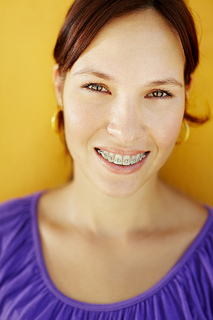June 16th, 2021

If you have been thinking about undergoing orthodontic treatment to straighten teeth or correct jaw alignment, the first step is scheduling an orthodontic consultation at Chan & Chen Orthodontics. During the consultation we will actively listen to your concerns and address all of your questions, as well as discuss a treatment options that would best suit you or your child's situation.
Here are the top five questions that most patients want answered during their initial orthodontic consultation:
- Can I benefit from orthodontic treatment, and if so, how long will it take?
- How frequently will my appointments be scheduled?
- Can I expect any pain when getting braces? (Ask Dr. Kathleen Chan and Dr. Ivy Chen about the ways we address pain management).
- Will I need to have teeth extracted, headgear, expansion appliance, etc.?
- How much will it cost and what payment options do you offer?
Visit our website for more answers to your questions prior to your initial consultation. Dr. Kathleen Chan and Dr. Ivy Chen and our team at Chan & Chen Orthodontics are happy to answer all your questions and concerns, and excited to explain all aspects of your treatment plan, as well as the expected outcome. We believe your orthodontic experience should be comfortable, hassle-free, and most importantly, leave you with the smile you've always wanted.
June 9th, 2021

It’s no easy feat to have one of the best smiles in Hollywood. The reality TV starlet Kristin Cavallari attributes her gorgeous smile to routine oral hygiene, the removal of two impacted wisdom teeth, and having undergone orthodontic treatment. Kristin’s treatment began in sixth grade when she was fitted with a device Dr. Kathleen Chan and Dr. Ivy Chen and our team call a palatal expander, which is used to guide upper jaw growth in our younger patients.
What is a palatal expander?
A palatal expander “expands” (or widens) your upper jaw by applying gentle pressure on your upper molars, and is used to make the bottom and upper teeth fit together better. In addition, palatal expanders work to create more room for teeth, as well as promote a broader, more appealing smile.
Do palatal expanders hurt?
Palatal expanders are usually not painful, however you may experience difficulty speaking and swallowing for the first few days. Adjusting your palatal expander as instructed by Dr. Kathleen Chan and Dr. Ivy Chen will ensure there are no delays in regards to your treatment plan.
Typically, it takes a few weeks to achieve the desired amount of expansion, after which you will keep wearing your expander for about six months, giving time for the new bone to form and stabilize. Dr. Kathleen Chan and Dr. Ivy Chen and our team at Chan & Chen Orthodontics will give you detailed instructions about how to adjust your appliance and can answer any questions you may have about your palatal expander.
If you have any questions about your palatal expander or your treatment plan with Dr. Kathleen Chan and Dr. Ivy Chen, please give us a call at our Andover office!
June 2nd, 2021

If you are planning on taking a vacation this summer, we ask that you let us know ahead of time so that we may schedule your summer appointments more efficiently. We also encourage patients and their parents to be proactive in determining when they make their summer appointments.
If you will be gone for an extended period (more than six weeks), we recommend you visit Chan & Chen Orthodontics prior to leaving and schedule another visit shortly after your return. Lastly, please remember not to indulge in hard, sticky, and chewy treats while enjoying your vacation. We look forward to seeing you soon and hearing about your adventures!
May 26th, 2021

Memorial Day is not only a federal holiday in the United States, but it is a day of observance and remembrance of those who died in service. Originally known as Decoration Day, this solemn day has been marked on calendars since the end of the American Civil War as a day to commemorate both the Confederate and Union soldiers who fought and died in the war.
Marking the graves of fallen soldiers with flowers, wreaths, or other tokens has been practiced throughout history, but it wasn't until the mark of the end of the Civil War that a special day was decided upon as the one to spend in remembrance. By 1890, every state in the country was observing Decoration Day. It wasn't until 1967 when the name formally changed from Decoration Day to Memorial Day, in order to encompass all fallen American soldiers in all wars and conflicts. In June of 1968, Congress moved the official date of Memorial Day to the last Monday in May in order to create a three day weekend.
Today, while there is certainly an air of remembrance on Memorial Day, it has become more a day of spending time with family, friends, and other loved ones. This day is also heralded as the start of summer, with many schools finishing for the year around this time. Our team at Chan & Chen Orthodontics remembers it as a day to take solace and remembered those lost.
Traditional observances of Memorial Day are still held, and they often involve raising the American Flag then lowering it to a half-staff position until noon, and then raising it once again to its full height afterwards. The flag is lowered to remember those who've lost their lives while in service to their country, and then it is raised to signify our willingness to not let their sacrifice be in vain.
From community parades in the Andover area, backyard cook-outs, and fireworks to formal ceremonies, Memorial Day is commemorated in many different ways. No matter how you choose to spend this day, take a moment to remember those who've lost their lives in an effort to preserve our freedom.





 Website Powered by Sesame 24-7™
Website Powered by Sesame 24-7™